Speakers and Session Chairs
(May be subject to change)The Australian IPv6 Summit 2010 will present local and international experts, including:
- Ala'a Al-Din Jawad Kadhem Al-Radhi, IPv6 Forum Jordan
- Kurt Bales, eintellego
- Darren Beauchamp, AGIMO
- Michael Biber, IPv6 Forum Australia
- Ron Broersma, Defense Research and Engineering Network
- Matt Carling, Cisco
- Dr Vint Cerf, Google
- Paul Ducklin, Sophos
- Prof. Hiroshi Esaki, University of Tokyo
- Shaun Ewing, Aussie HQ
- John Gibbins, CSIRO
- Simon Hackett, Internode
- Silvia Hagen, Sunny Connection AG
- Tony Hill, Asia Pacific IPv6 Task Force
- John Hillier, Australian Government Information Management Office
- Scott Hogg, Global Technology Resources Inc.
- Lawrence E. Hughes, InfoWeapons
- Geoff Huston, APNIC
- Kevin Karp, IPv6Now
- Joobum Kim, Korea Institute of Science and Technology Information
- Latif Ladid, IPv6 Forum
- Dr Kate Lance, IPv6Now (Chair)
- Beatty Lane-Davis, Juniper Networks
- Cheryl Langdon-Orr, auDA (Chair)
- Yi Lee, Taiwan Network Information Center
- Qing Li, Blue Coat Systems
- Jen Linkova, Google
- Alan Lloyd, wwite
- John Mann, Monash University
- Shannon McFarland, Cisco
- Jorke Odolphi, Microsoft
- Dr Bill Petreski, Ai Group (Chair)
- Paul Pettigrew, Mach Technology
- Mark Prior, Juniper Networks
- Jared Ring, Queensland University of Technology
- Phil Roberts, Internet Society
- Rohan Saldanha, Cisco (Chair)
- Luigi Sorbello, Telstra
- Richard Wood, InternetNZ
 Ala'a Al-Din J. Kadhem Al-Radhi
Ala'a Al-Din J. Kadhem Al-Radhi Ala'a Al-Din J. Kadhem Al-Radhi has a Bachelor degree in Electrical Engineering from the University of Baghdad and a Masters in Computer Information Network Security from DePaul University, Chicago. He has worked and trained in several countries and is currently based in Jordan. Over more than 27 years, his past work included technical advisor to the Iraqi ministerial of Telecommunications, Engineering observer with ITU, and various positions in information systems management and engineering platforms in governmental, intergovernmental, and private enterprises in Iraq, Jordan, the United Arab Emirates, and France, including the UN-ITU.
His current activities include the positions of advisory council member of PIR (Public Interest Registry), ICANN Board of Directors Election Candidate 2009-2011, AKMS (Arab Knowledge and Management Society) Board of Trustees Member, ISOC IGF Ambassador, Regional ITU Consultant in addition to being a member of many global organizations. He is President of the IPv6 Forum Jordan Chapter.
 Kurt Bales
Kurt Bales Kurt Bales has been working as a Network Consultant for the past 10 years, and spent 2 years working as the Network Operations Manager for a Wireless ISP that covered regional Australia throughout QLD, NSW, VIC and SA. Currently he is the Operations Manager (Networks) for eintellego Pty Ltd, where he is responsible for maintaining the networks for several ISPs and Content Providers, as well as several NGO and corporate customers. Kurt is also the lead engineer and Operations Manager for NOCNOC which specialises in management, maintaining and monitoring CPE for Small Businesses and Prosumers.
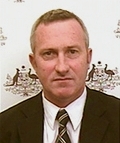 Darren Beauchamp
Darren Beauchamp Darren Beauchamp is Director, Architecture and Standards Branch, Australian Government Information Management Office (AGIMO), a Business Group of the Department of Finance and Deregulation. Darren completed ten years service with the Royal Australian Air Force where he was employed in technical streams including aircraft avionic maintenance and simulator software. This was followed by eight years in the private sector designing and programming embedded microprocessor control systems in the gaming and vending industries.
Darren joined the Australian Public Service in 1999 and has been actively involved in the provision IT services (both operational and strategic) to the Department of Defence, and the Department of Human Services. Darren moved to AGIMO in July 2009 to lead the Government Architecture, and Business Process Transformation teams, which include responsibility for the Whole-of-Government transition to IPv6.
 Michael Biber
Michael Biber Michael Biber is founder and current President of the IPv6 Forum Australia and was Chair of the AARnet IPv6 Working Group. During 1998-2005, Michael Biber was the Executive Director of the Advanced Networking Forum Australia (ANFA). This group managed the MPLS Forum, ATM Forum and Frame Relay Forum representation in Australia. Michael was the first Public Officer of the Australian Communications Industry Forum (now Comms Alliance), the telecommunication industry self-regulatory body. Michael leads strategic architecture projects for large, complex carrier and enterprise network solutions. These range from regional/rural broadband network to dedicated government and enterprise networks throughout Australia and internationally. Michael is the Professional Services Manager at IPv6 Now Pty Ltd, a lead technology trainer, and presents at numerous national and international technology conferences.
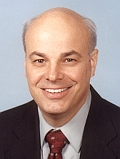 Ron Broersma
Ron Broersma
Ron Broersma is the Chief Engineer of the Defense Research and Engineering Network (DREN), in support of DoD's High Performance Computing Modernization Program, where he has served since its beginning in 1992. Since 1976, Mr Broersma has been employed as a scientist at the U.S. Navy's Research and Development laboratory in San Diego, California, leading a wide variety of networking initiatives, beginning with operating one of the first nodes on the ARPAnet, and most recently the operational deployment of IPv6 protocols in production networks. He also has over 25 years of experience in computer and network security and serves as SPAWAR's Enterprise Network Security Manager.
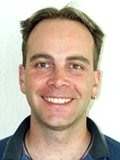 Matt Carling
Matt Carling
Matt Carling is a senior systems engineer at Cisco. During the past ten years at Cisco, he has worked closely with service provider, federal government, and defence organisations to provide architectural guidance, networking optimisation solutions, and technology deployment to realise service delivery by investing in the network as a platform. He has more than 19 years of experience in networking. Matt has a bachelor of engineering degree in computer engineering and a graduate diploma in management sciences, both from the University of Canberra, Australia.
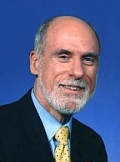 Dr Vint Cerf
Dr Vint Cerf Vinton G. Cerf is vice president and chief Internet evangelist for Google. In this role, he is responsible for identifying new enabling technologies to support the development of advanced, Internet-based products and services from Google. He is also an active public face for Google in the Internet world. Cerf is the former senior vice president of Technology Strategy for MCI. In this role, Cerf was responsible for helping to guide corporate strategy development from the technical perspective. Previously, Cerf served as MCI's senior vice president of Architecture and Technology.
Widely known as one of the "Fathers of the Internet," Cerf is the co-designer of the TCP/IP protocols and the architecture of the Internet. In December 1997, President Clinton presented the U.S. National Medal of Technology to Cerf and his colleague, Robert E. Kahn, for founding and developing the Internet. Kahn and Cerf were named the recipients of the ACM Alan M. Turing award in 2004 for their work on the Internet protocols. The Turing award is sometimes called the 'Nobel Prize of Computer Science.' In November 2005, President George Bush awarded Cerf and Kahn the Presidential Medal of Freedom for their work. The medal is the highest civilian award given by the United States to its citizens. In April 2008, Cerf and Kahn received the prestigious Japan Prize.
Vint Cerf served as chairman of the board of the Internet Corporation for Assigned Names and Numbers (ICANN) from 2000-2007. Cerf also served as founding president of the Internet Society from 1992-1995 and in 1999 served a term as chairman of the Board. In addition, Cerf is honorary chairman of the IPv6 Forum, dedicated to raising awareness and speeding introduction of the new Internet protocol. Cerf is a Fellow of the IEEE, ACM, and American Association for the Advancement of Science, the American Academy of Arts and Sciences, the International Engineering Consortium, the Computer History Museum, the Annenberg Center for Communications at USC and the National Academy of Engineering.
Cerf is a recipient of numerous awards and commendations in connection with his work on the Internet. He also holds an appointment as distinguished visiting scientist at the Jet Propulsion Laboratory where he is working on the design of an interplanetary Internet. Cerf holds a Bachelor of Science degree in Mathematics from Stanford University and Master of Science and Ph.D. degrees in Computer Science from UCLA. He also holds honorary Doctorate degrees from institutions world-wide. His personal interests include fine wine, gourmet cooking and science fiction. Cerf and his wife, Sigrid, were married in 1966 and have two sons, David and Bennett.
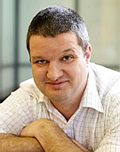 Paul Ducklin
Paul Ducklin Paul Ducklin is a computer scientist with a passionate focus on security. He has been with Sophos since 1995, and is currently Head of Technology, Asia Pacific. Ducklin (or you can call him "Duck", since it is shorter and easier to say) is a regular and popular presenter at AusCERT and Questnet conferences. In 2009 he received the inaugural AusCERT Director's Award for Individual Excellence in Information Security, something he doesn't mention much, except on-line, in press releases (photographs on request) and whenever he's asked to write a biography for a seminar or conference.
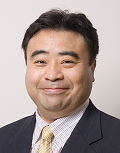 Prof. Hiroshi Esaki
Prof. Hiroshi Esaki
Hiroshi Esaki, Ph.D, is on the ISOC Board of Trustees, Professor at the University of Tokyo, Executive Director for Japan IPv6 Promotion Council, Director of WIDE project and Vice-President JPNIC (Japan Network Information Center). He is a Technical fellow of IPv6 Forum, Chair IP Ready Logo Program, IPv6 Forum Chair, Task Force on IPv4 Address, and Exhaustion Director, Japan Data Center Council. He received B.E. and M.E. degrees from Kyushu University, Fukuoka, Japan, in 1985 and 1987 respectively, and a Ph.D from the University of Tokyo in 1998. In 1987, he joined Research and Development Center, Toshiba Corporation, where he engaged in the research of ATM systems. From 1990 to 1991, he has been at the Applied Research Laboratory of Bellcore Inc., New Jersey (USA) as a residential researcher. From 1994 to 1996, he was at CTR (the Center for Telecommunication Research) of Columbia University in New York (USA).
During his stay at Columbia University he proposed the CSR architecture that is the origin of MPLS (Multi-Protocol Label Switching) to the IETF and to the ATM Forum. From 1996 to 1998, he has conducted the CSR project in Toshiba as a chief architect. He is an executive director of IPv6 promotion council, which is cross ministry and cross industry council to promote IPv6 technology. He is a vice chair of JPNIC (Japan Network Information Center) since 2006, and has served as an IPv6 Forum Fellow. From 2006-2010, he served as BoT(Board of Trustee) for ISOC (Internet Society). He is a director of WIDE Project since 2010, and director of Japan Data Center Council since 2009.
 Shaun Ewing
Shaun Ewing Shaun Ewing is the Chief Technology Officer at AussieHQ, Australia's third largest web services provider and has more than 10 years experience in the web services industry.
Among his many areas of responsibility within the company, Shaun has been responsible for turning what began as a side project into a production grade IPv6 service, and addressing the challenges involved in reaching that milestone both internal and external.
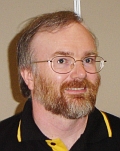 John Gibbins
John Gibbins John Gibbins has been working for the CSIRO in Perth and Canberra for the last 12 years and currently leads the IP Security Operations team. He has been interested in networks and security for longer than he cares to remember. For the past three years he has been raising awareness about IPv6 within the CSIRO and been actively deploying IPv6 across CSIRO's national network. He is particularly keen for IPv6 to be deployed BEFORE it becomes a necessity. This is so that there is time to iron out any problems that occur and ensure that there is time to deploy it in a secure manner.
 Simon Hackett
Simon Hackett Simon Hackett, Managing Director, Internode, is one of Australia's best-known technology entrepreneurs. As managing director of national broadband trailblazer Internode, Simon leads Australia's largest privately owned broadband company. Established in 1991, Internode has more than 200,000 broadband customers and 450 employees, a carrier-grade international telecommunications network and a range of value-added broadband services.
Simon leads Internode with a unique combination of technical insight and entrepreneurial energy. While renowned for its customer-friendly service, Internode constantly pushes back the boundaries of broadband innovation. In 2005, Internode was the first Australian company to launch commercial ADSL2+ broadband. In 2007, the company pioneered ADSL2+ Annex M services. In July 2008, Internode became the first national ISP to offer its customers direct access to Internet Protocol version 6 (IPv6) as part of its standard service.
In August 2008, Simon's achievements were acknowledged with the Telecommunications Ambassador award from the Communications Alliance. This annual award recognises an outstanding individual who has shown strong leadership and made a significant and visible contribution to the Australian communications industry. Simon won the Bulletin-Microsoft Smart 100 IT & Communications Award in 2004 and was an SA winner in the Ernst & Young Entrepreneur of the Year awards in 2005. Simon is also a Fellow of the Australian Computer Society.
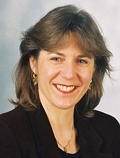 Silvia Hagen
Silvia Hagen Silvia Hagen has been working in the networking industry since 1990. Today she is CEO of Sunny Connection AG in Switzerland and works as a professional consultant and analyst for many mid-size and large sized companies. Her expertise is in Identity Management, Protocol and Performance Analysis and IPv6. She is the author of several successful books including 'IPv6 Essentials' published by O'Reilly. Silvia also presents internationally on various networking topics for Cisco Conferences, Burton Catalyst, Novell's Brainshare, NetWare Users international conferences, universities and also offers customized corporate presentations and public courses. She was a founding member of the Swiss IPv6 Task Force.
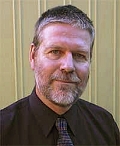 Tony Hill
Tony Hill Tony Hill has nearly two decades of experience in linking research to commercial and other community outcomes, particularly through more advanced approaches to research management. In 1999, he established his own consulting business, Capital Hill Consulting Pty Ltd, to help foster improved approaches to cooperative research projects. In 2007, he jointly founded IPv6 Now Pty Ltd to support uptake of the next generation of Internet technology, having been President of the Internet Society of Australia since 2001. He was chair of the Australian National ICT Industry Alliance from 2005 to 2007 and is chair of the Australian IPv6 Summit Steering Committee. In 2010, he became Chair of the Asia Pacific IPv6 Task Force.
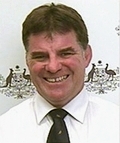 John Hillier
John Hillier John Hillier is Assistant Director, Architecture and Standards Branch, Australian Government Information Management Office (AGIMO), a Business Group of the Department of Finance and Deregulation.
John joined the Australian Commonwealth Public Service in 1981 and worked in the Departments of Social Security and Community Services throughout the 80s. He joined the private sector in 1988 and spent the next 17 years in various ICT companies supplying goods and services back into the government. He re-joined the APS in 2004 in the then Department of Industry, Science and Tourism as a Business Analyst/Contracts Manager.
John moved to AGIMO in 2007 and began work on the developing the Whole-of-Government IPv6 Transition Strategy. He convened the IPv6 Community of Interest that finalised the Australian Government IPv6 transition in December 2007. He is now the convenor of the IPv6 Community of Expertise (CoE) that oversees the whole-of-government transition to IPv6. The CoE revised the transition strategy to incorporate the industry and international shifts in 2008. He is the initial point of contact within AGIMO for any IPV6 related issue.
 Scott Hogg
Scott Hogg
Scott Hogg is the Director of Advanced Technology Services for Global Technology Resources, Inc. Scott Hogg has been a network computing consultant for over 18 years. Scott provides network engineering, security consulting, and training services to his clients, focusing on creating reliable, high-performance, secure, manageable, and cost effective network solutions. He has a B.S. in Computer Science from Colorado State University, a M.S. in Telecommunications from the University of Colorado, along with his CCIE (#5133), CISSP (#4610), among many other vendor and industry certifications.
Scott has designed, implemented, and troubleshot networks for many large enterprises, service providers, and government organizations. For the past 7 years Scott has been researching IPv6 technologies and recently has helped several Federal organizations with their IPv6 planning. Scott has written several whitepapers on IPv6 and has given numerous presentations and demonstrations of IPv6 technologies. He is also currently the Chair of the Rocky Mountain IPv6 Task Force.
 Lawrence E. Hughes
Lawrence E. Hughes Lawrence E. Hughes is founder, Chairman and Chief Technology Officer, InfoWeapons. He is a visionary in the information technology and computer security fields, with particular interest in secure digital communication and IPv6. An expert, with more than 35 years' experience in creating and developing security products, Mr. Hughes has a long history of being a valued consultant in various global security companies.
Mr. Hughes founded InfoWeapons Corporation to create high quality, simple-to-use, end-user tools as a response to the general lack of secure communication and IPv6 Ready tools currently available. He has authored the book "Internet E-mail: Protocols, Standards and Implementations", having been heavily involved with Internet e-mail security for many years. His book is still one of the leading books on E-mail.
Mr. Hughes' extensive technical background includes world-class skills in data security, cryptography, PKI, UNIX operating systems, Internet Protocols, IPv6, and software development in C/C++ and various assembly languages. He has a Bachelor of Science degree in pure mathematics, with a minor in physics, from the Florida State University. In addition, Mr. Hughes has been a member of Mensa International, a society of people whose IQ is in the top 2% of the population, since 1973.
 Geoff Huston
Geoff Huston Geoff Huston has been working in the Internet for ages. He started up the Australian Academic and Research Network a couple of eons ago and was given a 10 year sentence to toil in the underground bunkers at Telstra as a result. Upon his release he has been working as APNIC's Chief Scientist. He's been around Internet organizations a fair bit, having been on the Internet Architecture Board, on the Board of Trustees of the Internet Society, and currently he co-chairs a couple of IETF working groups on BGP security and IPv6 multi-homing. He writes a bit, plays with routing a bit and sometimes talks a bit about all the other bits.
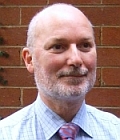 Kevin Karp
Kevin Karp Kevin Karp, B.E.(Hons), B.Sc, GradDipSIA, is a director of IPv6Now and the founder and Managing Director of PPS Internet. He has over 25 years of experience in board level commercial management of ICT and investment industry enterprises. In 1995 PPS established Semper.Net, one of Australia's first Internet managed services networks. In 2007 Kevin negotiated and directed PPS's acquisition of StudentNet, Australia 's oldest schools education network, and jointly founded IPv6Now. He is a founding member and Secretary of the Internet Society of Australia, a Senior Member of the Association for Computing Machinery (ACM) and a Fellow of the Financial Services Institute of Australasia (FINSIA).
Joobum Kim
Joobum Kim received the B.S degree in Electronics and Communications Engineering from Kwangwoon University in 1999 and the M.S degree in Information and Communications Engineering from Gwangju Institute of Science and Technology in 2002. He worked for Telecommunication Systems Division of Samsung Electronics from 2002 to 2005. He is now working for Korea Institute of Science and Technology Information. He is interested in mobile/wireless network and especially cell planning and optimization.
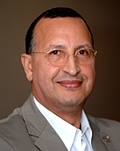 Latif Ladid
Latif Ladid Latif Ladid holds the following positions: President, IPv6 FORUM, Chair, European IPv6 Task Force, Emeritus Trustee, Internet Society, Board Member IPv6 Ready & Enabled Logos Program,and Board Member World Summit Award.
He is a Senior Researcher at the University of Luxembourg on multiple European Commission Next Generation Technologies IST Projects: 6INIT, www.6init.org - First Pioneer IPv6 Research Project; 6WINIT, www.6winit.org; Euro6IX, www.euro6ix.org; Eurov6, www.eurov6.org; NGNi, www.ngni.org; Project initiator SEINIT, www.seinit.org, and Project initiator SecurIST, www.securitytaskforce.org.
Latif initiated the new EU project u-2010 to research Emergency & Disaster and Crisis Management, www.u-2010.eu, launched the Public Safety Communication Forum, www.publicsafetycommunication.eu, supported the new IPv6++ EU Research Project called EFIPSANS, www.efipsans.org, supported the new safety & Security Project using IPv6 called Secricom, www.secricom.eu, and coordinates the new EU project IRMA (Integrated Risk management for Africa using IPv6), www.irma.lu.
He is also a Member of 3GPP PCG (www.3gpp.org), 3GPP2 PCG (www.3gpp2.org), Vice Chair, IEEE ComSoc EntNET (www.comsoc.org/~entnet/), member of UN Strategy Council, member of IEC Executive Committee, Board Member of TSF (Technologies Sans Frontières), Board member of AW2I, Board Member of Nii Quaynor Institute for Research in Africa, and member of Future Internet Forum EU Member States (representing Luxembourg) Luxembourg, July 2009.
 Dr Kate Lance (Chair)
Dr Kate Lance (Chair) Kate Lance is Communications Director of IPv6Now. She holds a PhD in astronomy and has worked in Internet technology for over twenty years. She was System Manager and Director of Internet Services at the pioneering ISP Connect. She helped found the Internet Society of Australia and was its Executive Director from 2002 to 2006, which led to her involvement in IPv6. Kate also creates websites through Lancewood, and writes. Redbill: From Pearls to Peace won the Western Australian Premier's Book Award 2004 for Non-Fiction, and the biography Alan Villiers: Voyager of the Winds won the Mountbatten Maritime Award 2009.
Beatty Lane-Davis is a Senior Systems Engineer with Juniper Networks based in Melbourne. Beatty's itinerant career in technology and telecommunications spans nearly fifteen years and four and a half continents. He has worked with vendors, telco's, ISP's and enterprises in a wide variety of roles. Since joining Juniper Beatty has been helping customers in ANZ scale their networks, enable new services and extract greater value out of their infrastructure. Beatty's days are happily consumed with topics like IPv6 subscriber management, policy-based networking, QoS and MPLS.
 Cheryl Langdon-Orr (Chair)
Cheryl Langdon-Orr (Chair)
Cheryl Langdon-Orr is a member of the auDA Board and the Honorary Treasurer of ISOC-AU. Her ongoing interests are consumer and end user focused (she currently represent ISOC-AU in the ACIF Consumer Advisory Council) with a keen interest in policy development, access, outreach and regulatory issues. She was an Individual Member (prior to the formation of ISOC-AU) of ISOC and a Demand Class Member of auDA, having been recently re-elected as an auDA Board Member for a second term of office. Previously she has worked on several auDA Policy Advisory Panels, and is the current Chair of the Domain Name Industry Code of Practice Committee.
 Yi Lee
Yi Lee
Yi Lee joined the Taiwan Network Information Center (TWNIC) in March 2010. As Head of Internet Resource, he leads the team involving the development of policies for internet resources management in Taiwan. Prior to joining the TWNIC, he worked for Seednet, the second largest ISP in Taiwan, for a decade, where he held the position of Senior Manager of Research and Development Team.
His background ranges from software development, design and implementation of carrier-grade VoIP service systems, and large scale project management. He received his master degree in computer information science from Syracuse University, USA.
 Qing Li
Qing Li
Qing Li, Chief Scientist at Blue Coat Systems Inc., is responsible for the design and implementation of the IPv6 Secure Web Gateway Appliance at Blue Coat. The product was officially released to market in Nov. 2009 and received the IPv6 Application Solution Pioneer Award from the IPv6 Forum in April 2010. Qing is a published author, most notably the two-volume reference series on IPv6. Volume I, IPv6 Core Protocols Implementation, and Volume II, IPv6 Advanced Protocols Implementation, were published in October 2006 and in April 2007 respectively, by Morgan Kaufmann Publishers.
In 2003 Qing published the embedded systems development book Real-Time Concepts for Embedded Systems, that has served as reference text in the industry as well as in universities. Qing is also a contributing author to the first of its kind book entitled Handbook of Networked and Embedded Control Systems, published in June of 2005 by Springer-Verlag. Qing is an active FreeBSD developer and committer.
 Jen Linkova
Jen Linkova
Jen Linkova has been in IT for more than 10 years. Originally from Russia, she worked as an engineer for Russian telecom ISPs, a Cisco gold partner, and Cisco itself. Jen moved to Australia in 2008 and commenced work for Google. She has CCIE Security and CISSP certifications. Her primary area of interest is networking and security - and, of course, IPv6.
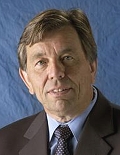 Alan Lloyd
Alan Lloyd
Alan Lloyd is Executive Director, wwite Pty Ltd. He is a long time player in the large-scale directory, identity and information management area and is known internationally for his work with carriers, banking, government and allied defence forces worldwide. Alan initiated (1987) and was a key designer of what is now the Etrust directory, owned by Computer Associates. Alan is the principal architect and inventor of CADS.
Alan brings many years of experience in business/IT strategies and the delivery of engineering and information approaches to building and deploying large scale online e-business identity platforms. He has advised senior levels of government and military in Australia and the US. Alan has worked with International Standards bodies including the ITU, ISO and IETF for 16 years holding chairman positions. He received an ISO award for his contribution to international information and security standards.
 John Mann
John Mann
John Mann graduating from Monash University in 1980, and spent 3 years in Canberra programming an OSI-model network for the Australian Bureau of Statistics. Since returning to Monash to work as a VMS system administrator, he has pioneered much of the networking at Monash. John has worked on re-creating, improving and expanding the Monash network every few years using each new wave of networking technology from 2400 bit/s X.25 up to WDM and 10 Gbit/s Ethernet, and network protocols from home-made, DECnet and NetWare to TCP/IP.
John was responsible for Monash's central e-mail hub for 15 years, and is still responsible for the DNS, IP addressing and routing. He is currently involved hands-on with various higher-level network management, security, and e-Research projects.
 Shannon McFarland
Shannon McFarland
Shannon McFarland, CCIE #5245, is a Corporate Consulting Engineer in the Office of the CTO and is focused on Enterprise IPv6 deployment, VDI, and Data Center technologies. Shannon has been responsible for the Enterprise IPv6 design and deployment effort at Cisco for the last 7 years. He has authored many technical papers, Cisco Validated Design guides, a contributor to Cisco Press books and is a frequent speaker at Cisco Networkers and other industry conferences. He is currently writing a Cisco Press book titled "IPv6 Deployment in the Enterprise". Prior to his time at Cisco corporate, Shannon was an SE in the Cisco Englewood, CO office. Shannon has been at Cisco for 10+ years and working in the networking/application industry for over 16 years.
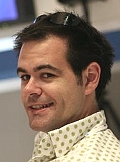 Jorke Odolphi
Jorke Odolphi
Jorke is an Infrastructure Evangelist for Microsoft Australia, and works on the technical side of the community of the Web. Jorke has previously worked with large service providers specialising in the deployment and management of many different weird and wonderful technologies in multi-tenancy situations, and he has developed an unusual relationship with IIS and tries to make everything work with it.
Jorke loves talking about datacentres, infrastructure and the fat pipes the make the Internet, cloud or ... whatever. Jorke also feels quite strange talking about himself in the third person...
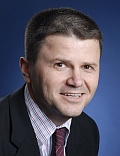 Dr Bill Petreski (Chair)
Dr Bill Petreski (Chair)
Dr Bill Petreski is Principal Advisor, Information & Communications Technology (ICT) Industry, Australian Industry Group (Ai Group). Based in Melbourne, he is responsible for leading industry development with new strategies for the Ai Group. As Principal Advisor he consults with industry members to help them understand new and evolving technology and its impact on their business and workforce. He also consults with government departments, at both state and federal levels, on industry trends and strategies that will support the overall growth in Software & Services, Technology Hardware & Equipment and Telecommunications Services sectors which ultimately define the ICT Industry.
Dr. Petreski received a postgraduate degree - Doctor of Philosophy (Ph.D.) in Physics (Fibre Communications) - in 1997 from Victoria University, in Melbourne, after completing a Bachelor of Applied Science (B.App.Sc.) in both Computer Science and Physics. His academic research had applications in fibre communications, advanced manufacturing, industrial sensing and biological & medical imaging.
 Paul Pettigrew
Paul Pettigrew
Paul Pettigrew is the Managing Director of Mach Technology, a next generation technology solutions company who were first to market and are the thought leaders in Australia on Cloud Computing. Before founding Mach Technology, Paul held leadership roles in SMS Management & Technology, KAZ Technology Services and Aspect Computing.
Prior to his commercial career, Paul served in the Royal Australian Air Force for 11 years as an F/A-18 Fighter Pilot and Qualified Flying Instructor (QFI). He has also represented Australia at the World Rowing Championships and holds Computer Science, Business Management and Aviation tertiary qualifications.
 Mark Prior
Mark Prior
Mark Prior is Director, Research and Education Networking, Asia Pacific, Juniper Networks. He joined Juniper Networks in April 2008 as a liaison to the Asia Pacific Research and Education Networking community. In this role, he spearheads Juniper's relationship with research and educational organizations, such as National Research and Education Networks and Universities.
Before joining Juniper, Mark was with AARNet where he helped design and implement the third generation of the AARNet network (AARNet3). AARNet3 was designed to be a dual stack network that could provide a native IPv6 connection to any AARNet customer. AARNet has a number of international IPv6 interconnection relationships with both research and education networks and commercial ISPs.
Before AARNet, Mark was with connect.com.au, one of Australia's first commercial ISPs, as Network Architect (Backbone Engineering). It was where, in 1999, he began experimenting with IPv6. Mark is a graduate of the University of Adelaide.
 Jared Ring
Jared Ring Mr Jared Ring is a PhD researcher with the Information Security Institute at the Queensland University of Technology (QUT). He is also a lecturer within the Faculty of Science and Technology at QUT.
Mr Ring has been involved in Intelligent Transport Systems (ITS) communication systems research and standardisation for the last 3 years, and currently is Australia's nominated expert to the International Standards Organisation (ISO) working group, developing wireless communications standards to support ITS.
 Phil Roberts
Phil Roberts Phil Roberts joined the Internet Society's Standards & Technology Department in April 2008. As Technology Program Manager, organizes and leads aspects of the Internet Society's work in advancing the development and deployment of open standards and promoting the Internet's collaborative development and operational management model.
Phil has been active in the IETF for over a decade, with roles including working group chair, nominating committee chair, and executive director of the Internet Architecture Board (IAB). During that time, his technical focus has been integrating Internet technologies into cellular telecommunications systems. He has promoted the use of IETF-standardized mobile networking technologies for delivery of data across cellular networks, which is now becoming the basis of networking technology for all cellular applications.
His background ranges from core development in software, operating systems, and management systems; research in platforms and networks for cellular networks; to business development and marketing. His research experience includes both AT&T Bell Laboratories and Motorola Laboratories and he held the position of Director of Network Architecture for Megisto Systems, Inc.
Rohan Saldanha (Chair)
 Luigi Sorbello
Luigi Sorbello Luigi Sorbello was appointed Director, NBN Technology Engineering, in Telstra's Network &Technology division in Oct 2009. Prior to that he was Director of Network Technology, Network Engineering where he was responsible for the engineering design of all technology platforms in Telstra's core, edge, access, transport, satellite, and fixed radio networks, together with supporting Building Services technologies and their deployment into the Telstra's next generation production environment . In addition, he was responsible for delivering Telstra's wireline transformation program and system integration.
Luigi has been responsible for the implementation and oversight of Telstra's IPv4 to IPv6 transition strategy across all technology domains. Luigi has had over 30 years experience in a range of roles with Telstra in the Telecommunication Industry, including a two year secondment to New Zealand as Chief Operations Officer for Telstra Clear. Luigi has an Electrical Engineering degree graduating with First Class Honours, and a Master of Engineering Science degree.
 Richard Wood
Richard Wood Richard Wood has worked in policy and research at InternetNZ for the past four years, covering issues such as IPv6, Internet filtering, spam and copyright. He began working in ICT 20 years ago as a programmer and technical support officer, before embarking on an award-winning career in ICT journalism and publishing. Richard has been Editor of Computerworld Australia, Australian Information Week, Computerworld New Zealand and the New Zealand Telecommunications Review.









